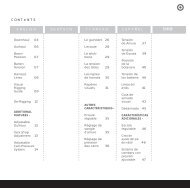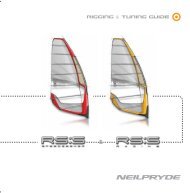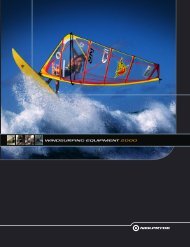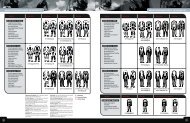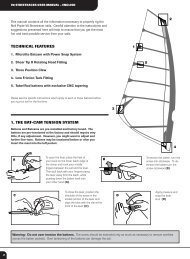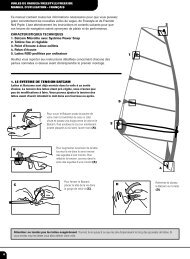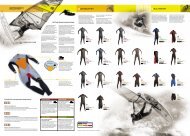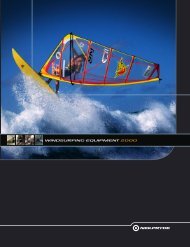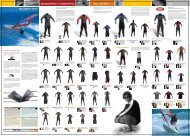Neil Pryde
Neil Pryde
Neil Pryde
You also want an ePaper? Increase the reach of your titles
YUMPU automatically turns print PDFs into web optimized ePapers that Google loves.
TRIM GUIDE
1. DOWNHAUL<br />
A. Slide mast into mastsleeve<br />
B. Set your <strong>Neil</strong> <strong>Pryde</strong> extension to the<br />
printed setting<br />
C. Thread line as shown. Race and<br />
slalom sails should be rigged using the<br />
6:1 technique. Wave and Freestyle sails<br />
where downhaul tension is required<br />
can be rigged using the 4:1 Loop-<br />
Loop-Pull technique.<br />
D. Downhaul sail until tack-fitting is<br />
aligned with edge of extension (as<br />
shown)<br />
E. In stronger winds, you can increase<br />
downhaul by approximately 1cm<br />
F. In lighter winds, you can release<br />
downhaul by approximately 1cm<br />
LOOP<br />
2<br />
3<br />
WAVE<br />
1<br />
PULL<br />
4<br />
LOOP<br />
SLALOM<br />
D<br />
5<br />
4<br />
1<br />
2<br />
3<br />
6<br />
RX2<br />
ENGLISH
2. OUTHAUL<br />
A. Set your <strong>Neil</strong> <strong>Pryde</strong> boom at the<br />
setting shown on the tack of the sail.<br />
B. Thread line as indicated, using the<br />
Loop-Loop-Pull technique.<br />
C. Outhaul the sail until neutral (as<br />
shown right). You will add 3–4cm of<br />
outhaul on a wave sails, and 1–2 cm<br />
on a slalom/freeride sail.<br />
D. In lighter winds, you can release<br />
the outhaul by approximately 1–2cm,<br />
and more on race and slalom sails.<br />
E. In stronger winds, you increase the<br />
outhaul by approximately 1–2cm.<br />
LOOP<br />
3<br />
2<br />
LOOP<br />
4<br />
PULL<br />
1<br />
RX2<br />
ENGLISH
3. BOOM POSITION<br />
A. Set the boom at chest level.<br />
B. According to sailing style and wind<br />
conditions, you can set the boom lower<br />
or higher within a range of<br />
approximately 15cm up or down.<br />
Lower = more control in strong winds<br />
or in wave sailing conditions.<br />
Higher = early planing and better<br />
upwind performance.<br />
4. BATTEN TENSION<br />
All battens are factory tuned, but you<br />
should always check batten tension<br />
and eliminate all vertical wrinkles by<br />
applying proper tension.<br />
RX2<br />
ENGLISH
5. HARNESS LINES<br />
A. Harness lines should be set so that<br />
the sail is balanced with equal pressure<br />
on both hands.<br />
B. Center of effort can be found while<br />
hooked into the harness and releasing<br />
your hands. With correct harness line<br />
setting, the sail will stay balanced. Once<br />
you have found a good position, it is a<br />
good idea to mark your boom.<br />
C. On larger sails and in overpowered<br />
conditions, move the harness lines back<br />
slightly.<br />
B<br />
A<br />
A<br />
RX2<br />
ENGLISH



